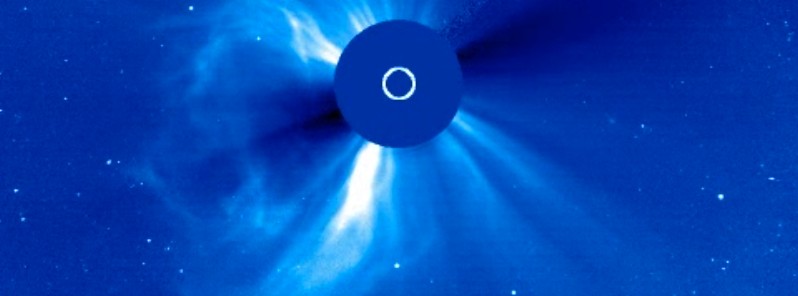A large asymmetric partial halo CME was observed just beyond the east limb of the Sun at approximately 06:36 UTC on January 3, 2023.
This event was associated with the C3.2 flare most likely from old Region 3163 (S19, L=231).
A Type II Radio Emission, with an estimated velocity of 624 km/s, was detected at 06:27 UTC. Type II emissions occur in association with eruptions on the Sun and typically indicate a coronal mass ejection (CME) was associated with a flare event.
A Type IV Radio Emission was detected at 06:42 UTC, suggesting a major eruption took place on the Sun, typically associated with strong CMEs and solar radiation storms.
Additionally, a 10cm Radio Burst (Ten flare) with a peak flux of 229 sfu, lasting 4 minutes, was also associated with this flare event.
Due to the location of the source region, this CME is not anticipated to have any impacts at Earth, but modeling is underway to verify.
The region is expected to return to Earth view on January 4.
Unsettled to G1 – Minor geomagnetic storm periods are likely on January 4 and 5 due to the onset of negative polarity coronal hole high speed stream (CH HSS) influences and the anticipated arrival of a CME produced by M3.7 solar flare on December 30.




